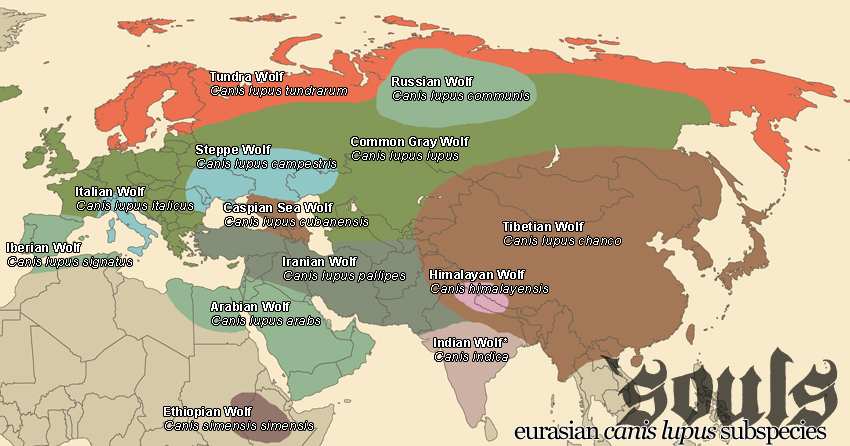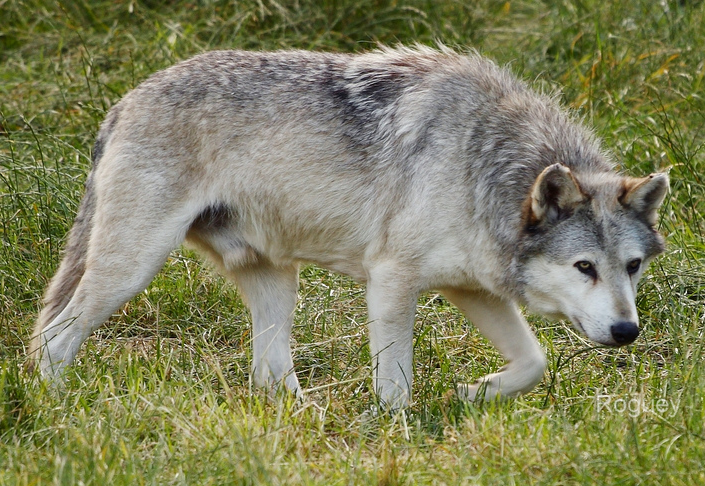Russian Wolf (''Canis lupus communis'')
See our RP Guide for more extensive information regarding wolves.
On this page... (hide)
- 1. Common Names
- 2. 'Souls Range
- 3. Appearance
- 4. Other Characteristics
- 4.1 Social Structure
- 4.2 Habitat
- 4.3 Survival
- 4.4 Luperci
- 5. Citations
1. Common Names
Russian Wolf
2. 'Souls Range
North-central Russia.
3. Appearance
Canis lupus communis, from roguey@Flickr
The Russian Wolf is an example of a large Eurasian subspecies, comparable to both the Tundra Wolf and the Common Gray Wolf in size and stature. They have a weight range from 66 - 180 lbs (30 - 80 kg), with males significantly heavier and larger than females.
The Russian Wolf's coloration is typical to that of its neighbors; it displays the range of Gray Wolf colors from white to black, with shades of cool gray being more common than dusky or tawny hues. It has a thick coat, adapted to its northern range.
4. Other Characteristics
4.1 Social Structure
Characterized as more aggressive than North American counterparts as well as other Eurasian species, both toward their own kind and humans. Despite this, they still keep highly organized pack structures similar to other Gray Wolf subspecies.
4.2 Habitat
Russian wolves are highly adapted to the northern parts of Russia. They live in areas that were sparsely populated by humans, though there is a substantial Russian wolf population in Arkhangel'sk, Russia.
4.3 Survival
Russian wolves were not incredibly common prior to the extinction of humanity due to hunting and control practices. After 1988, they began to flourish once again, and they eventually encountered Luperci, adapting to more humanized lifestyles. This aided them greatly, as they competed heavily with the Tundra Wolves as well as Common Gray Wolves, and adapting to human technologies faster than their neighbors surely helped the Russian Wolves sustain themselves.
4.4 Luperci
Most Russian wolves are Luperci and live in humanized cities or semi-humanized encampments; however, thanks to the the size and remoteness of their range, feral populations may be found in isolated areas. Non-Luperci are very rare to find in Russian Wolves, however -- the spread of the Luperci virus is pervasive throughout their region, aided by the large, shifting populations of Tundra and Common Gray wolves surrounding their home range.
5. Citations


